How to Get Rid of a Neck Hump — And Soothe Neck and Back Pain in the Process
A top spinal surgeon shares the best home exercises that realign the spine
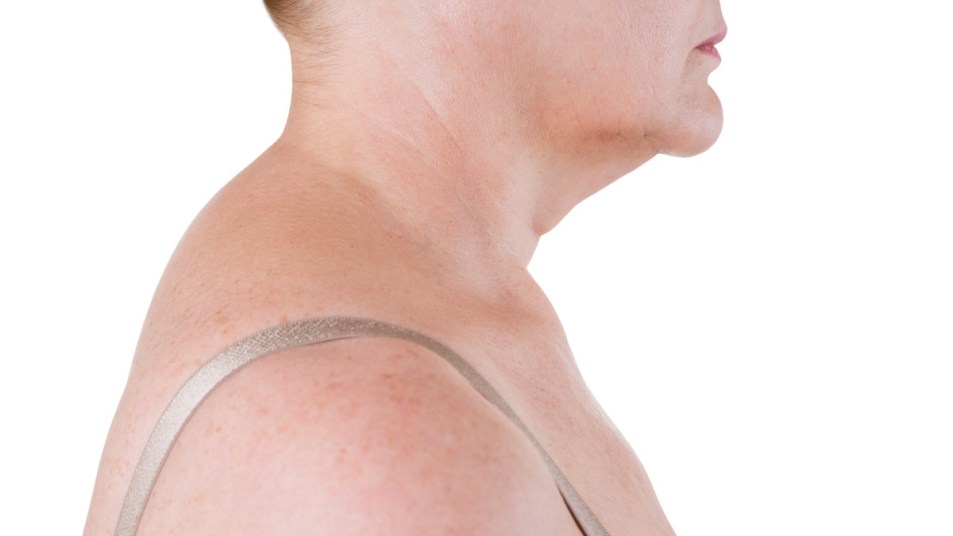
We all have a complicated relationship with aging. It can be beautiful thing — retirement, wisdom, self-awareness — but it also poses health challenges we never expected. One that can make us look older than our years: the dreaded neck hump. And if you’ve noticed one starting to appear, you likely want to know how to get rid of a neck hump. The good news? There are a few simple exercises you can do from the comfort of home to diminish its appearance.
What is a neck hump?
Often called a dowager’s hump or even a buffalo hump, a neck hump is medically known as kyphosis. Although it might sound more like an ailment from your grandmother’s era, cases of rounded shoulders accompanied by a rounded spine and small hump at the base of the neck have surged in the past 10 years. To blame? Everything from more hours spent hunched over smartphones to stress, leaving up to 40% of women and men over 50 with the condition, say University of California scientists. What’s more, it can worsen with time.
Once you start developing a curve as a result of slouching, you naturally compensate by straining your neck forward and tilting your head up to keep your gaze level. Ken Hansraj, MD, a spinal surgeon and author of Watch Your Back: Nine Proven Strategies to Reduce Your Neck and Back Pain Without Surgery, compares the movement to a crane operating with cantilevered sections. This accentuates the curve even more. And it’s not vain to want it fixed. In fact, if left unchecked a neck hump can lead to headaches, neck pain, back pain and even difficulty breathing. (Click through to learn how ab workouts for women can support good posture.)
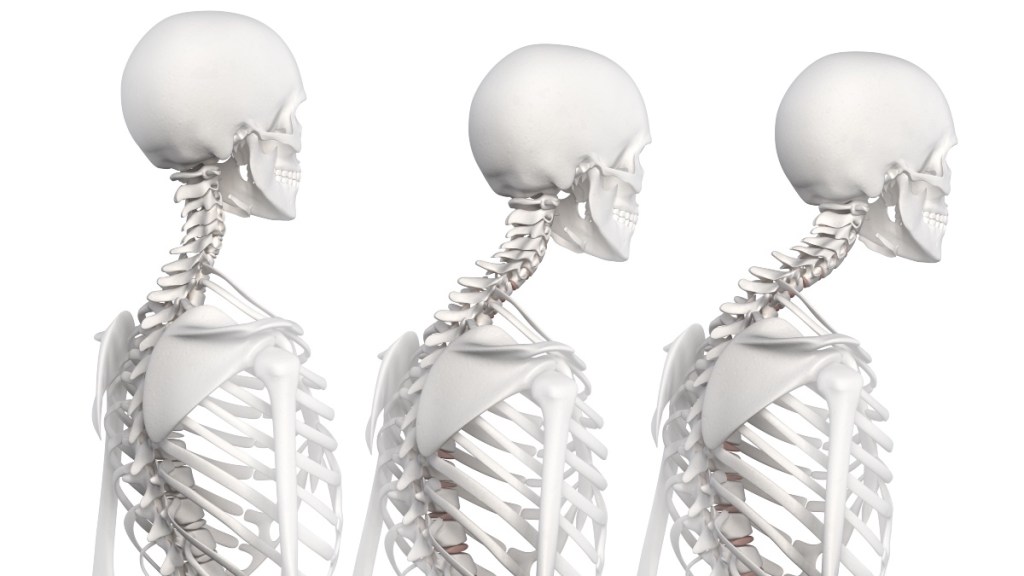
Understanding the different types of neck humps
There are three different kinds of kyphosis: postural, congenital, and Scheuermann’s. Postural, the one we’ll focus on here, is the most common. Doctors define it as a spine that has curved 50 degrees or more. Congenital kyphosis, on the other hand, occurs when certain back bones don’t develop properly and is diagnosed at birth.
Finally, Scheuermann’s kyphosis is a hereditary condition that generally appears between the ages of 10 and 15. It describes a curved spine caused by vertebrae that have developed a wedge shape. (Normal vertebrae should have a rectangular shape.) “During growth of the spine, the growth rate of the front of the vertebral bone may be slightly less than the back of the backbone, leading to wedge-shaped backbones, and kyphosis,” Dr. Hansraj says.
Most women with postural kyphosis are primarily concerned about appearance, but the detrimental health effects are just as important. A mild neck hump may cause symptoms such as back pain or stiffness, fatigue and tight hamstrings (those muscles at the back of your upper thighs). A more severe curvature can cause:
- Neck and back pain
- Stiffness
- Fatigue
- Restricted movement, including difficulty walking, looking up, or moving from sitting to standing
- Numbness or tingling in the legs
- Shortness of breath or trouble breathing
- Acid reflux
- Difficulty swallowing
What causes a neck hump to form?
According to Rahul Shah, MD, board-certified orthopedic spine and neck surgeon, and Liza Egbogah, DOMP, manual osteopath and chiropractor, most cases of kyphosis are caused by the following:
1. Poor posture
When we slouch, our heads lean forward to compensate, making a neck hump more visible. “Too much time spent on devices where you are leaning forward and looking down are main contributors,” Egbogah says.
This poor posture puts a significant amount of pressure on the spine, adds Dr. Hansraj. The average head weighs about 10 to 12 pounds, which is the same force it exerts on the neck when it’s in a neutral position, according to Dr. Hansraj’s landmark study in Surgical Technology International. But as your head flexes forward, the pounds of force the head exerts on the spine continue to rise. That means a forward flex of 15 degrees exerts 27 pounds of force, a 30-degree flex exerts 40 pounds of force, a flex of 45 degrees exerts 49 pounds of force, and a flex of 60 degrees exerts 60 pounds of force. (See the animation below, courtesy of Dr. Hansraj, for an illustration.)
2. Arthritis
“If you have arthritis that affects the lower neck, the head may automatically lean more forward in order to keep the arthritic areas in a more comfortable position,” Dr. Shah explains. Dr. Hansraj adds that this leaning forward opens up the spinal channel to allow more space for the spinal cord, which is the reason the movement helps you feel better. (Need extra arthritis relief? Click through to learn how a castor oil pack eases joint pain.)
3. Aging
“As you age, you may lose significantly more mass in the spinal vertebra, either in the neck or the thoracic bones,” says Dr. Shah. (Thoracic vertebra make up the top half of the spine, from the neck to mid back.) “This causes posture changes which accentuate a neck hump.” Specifically, Dr. Hansraj explains that osteoporosis and the wear, tear and degeneration of the spine can actually cause the front of the spine to collapse, which leads to kyphosis. (Click through to learn how to strengthen bones without osteoporosis drugs.)
4. Excess fat
“The hump that most people describe often comes from a prominence of the tissues where the neck meets the upper back,” Dr. Shah says. “This can happen because of extra tissue deposits from extra fat stores.” Adds Dr. Hansraj, “MRI scans are showing us more and more cases of this fatty hump deposit, which I believe is a combination of poor posture and poor nutrition.”
5. Other medical conditions
Although it’s more rare, Dr. Hansraj says there are serious conditions that can also cause a neck hump. That includes a spinal infection, a spine tumor, connective tissue disorders, metabolic bone disorders such as Paget’s disease, hyperparathyroidism, chronic kidney disease, fibrous dysplasia and osteopetrosis. “If you are developing a hunch in the spine, please see your medical doctor and/or a spine specialist.”
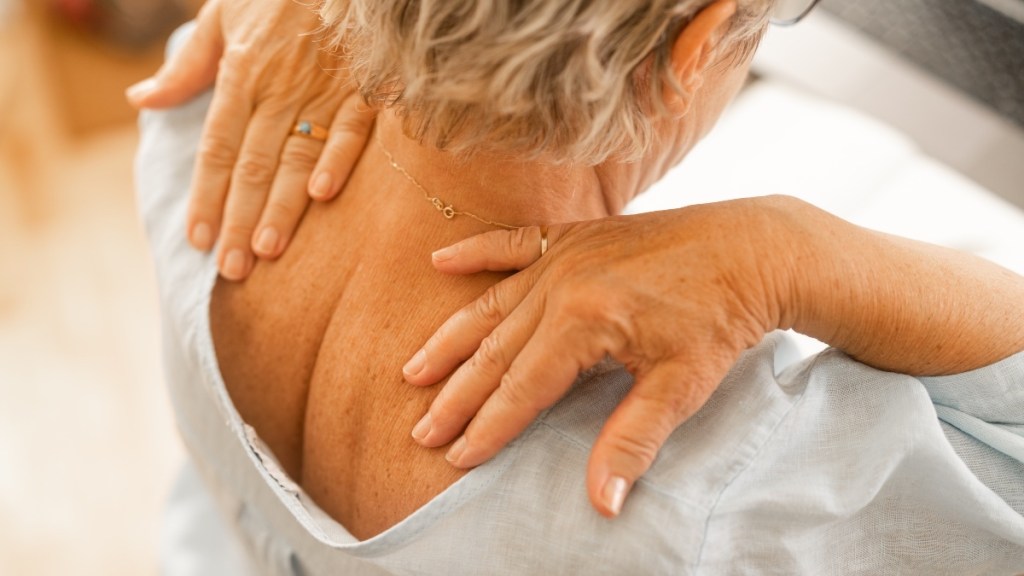
Is a neck hump permanent?
It depends on the type of kyphosis and what caused it. “When a neck hump is caused by postural changes, you can correct it by improving your posture,” Egbogah says. “In cases of severe arthritis, there are permanent changes to the spine that can make the hump irreversible.” Yet Dr. Shah points out that your doctor may still be able to treat and improve a permanent change. “If the hump is as a result of structural changes at the bone level, medication may help,” he says. “In certain specific conditions, surgery may help realign the neck bones.”
If the hump is caused only by excess fat, regular exercise and postural stretches may help reduce the appearance and get rid of a neck hump. Keep in mind that you can’t spot-reduce fat. Only a total reduction in body fat would help eliminate those extra fat deposits.
But no matter the cause of the kyphosis or its severity, there are ways you can improve your posture, reduce or get rid of a neck hump, and maintain good, pain-free mobility, assures Dr. Hansraj. “Even in the most rigid of kyphosis, help is available,” he says. “The combination of standing tall and rising, opening up your shoulders and retracting the shoulder blades are powerful posture-fixing strategies that can be achieved even with the frozen vertebrae of rigid kyphosis.” In other words, even a little movement can go a long way to help.
How to get rid of a neck hump with exercise
You don’t need to log hours a day at the gym to get rid of a neck hump. Easy stretches and exercise that you can do right at home in just a few minutes can help.
1. Do ‘wall angels’
A simple technique known as “wall angels” are an effective way to minimize or get rid of a neck hump, says Dr. Hansraj of the exercise described in his book. “This stretch is like making snow angels. It is a deep, dynamic stretch for the spine. The movement strengthens back muscles and lengthens muscles in the front of the neck, shoulders and core. By focusing on upper body mobility, wall angels promote proper spine alignment, strengthen muscles that hold the shoulders back, and help maintain a full range of motion.”
Plus, he says, wall angels can reduce rounded shoulders by stretching the muscles in the front of the body. “By working the upper and mid-spine, the vertebral joints in the neck may de-compress, which relieves pain and tension and reduces jutting head.”
Dr. Hansraj’s how-to:
- Stand with your back to a wall. Walk your feet out so that your heels are 6″ from the wall.
- Lean back against the wall. Tuck your pelvis so that your lower back is flat against the wall. Then pull your shoulders and head back to touch the wall.
- Slowly raise your arms overhead with the back of your hands skimming the wall, until your hands touch overhead.
- Slowly return your arms to the starting position, making sure the backs of your arms never leave the wall.
- Repeat 5 to 10 times.
Watch the below animation (courtesy of Dr. Hansraj) to see the move in action:
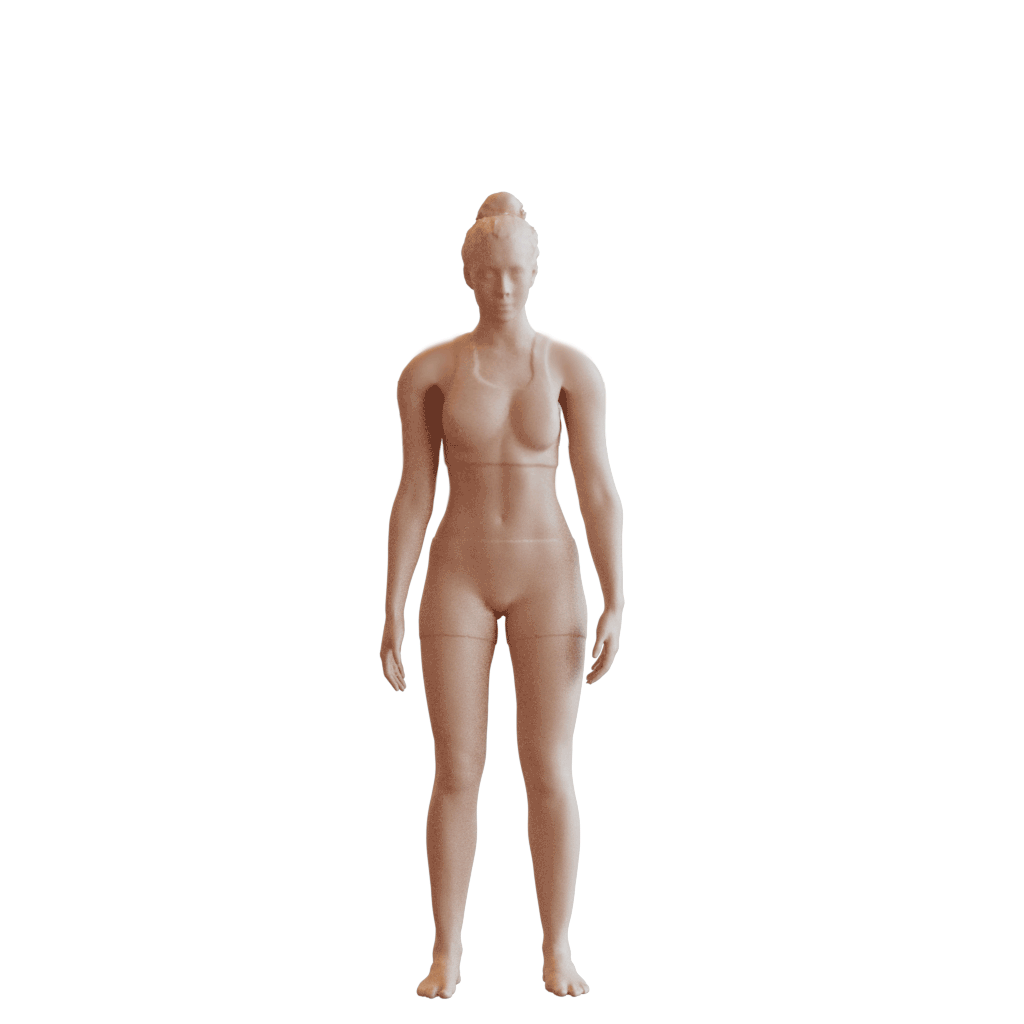
2. Try a chest stretch
“My favorite exercise to reduce the appearance of a neck hump is a pec stretch with neck extension,” says Egbogah. “With this exercise, you are looking up to stretch the muscles at the front of the neck that get tight with poor posture and causes anterior head carriage. Anterior head carriage is when your head moves in front of your shoulders causing misalignment. This posture results in a neck hump. So, by correcting it, you will minimize the appearance of a neck hump.”
To do:
- Stand with your feet hip-width apart.
- Clasp your hands behind your back and slowly straighten out your elbows, gently squeezing your shoulder blades together as far as they can go.
- Hold for five breaths, then relax and repeat two more times.
- If you feel comfortable, squeeze your shoulder blades together with more strength each round.
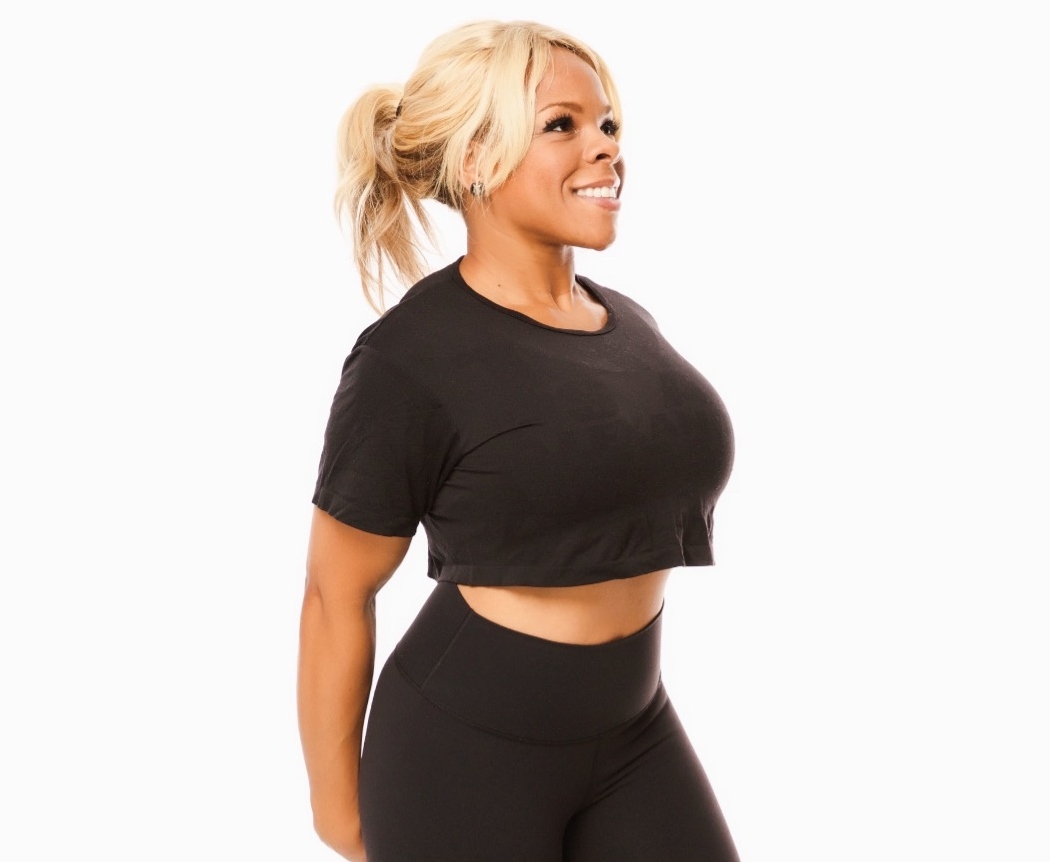
“If you have severe arthritis, a neck injury, or any medical condition where you experience dizziness or lightheadedness, you shouldn’t perform this exercise,” Egbogah advises. However, she adds that if you don’t have any of these contraindicated conditions, this is a safe exercise to try at home. Dr. Shah advises speaking with your doctor to determine the cause of your kyphosis before doing any exercises, saying it’s important to know the cause in order to give treatments the best chance of success.
What about YouTube videos on how to get rid of neck hump?
For more ways to help get get rid of a neck hump, YouTube has a lot of video tutorials. It’s always safest to find videos created by licensed medical professionals, like this routine of stretches from the Milton Chiropractic Clinic in Cambridge, UK.
For an even simpler routine that requires no equipment, try this one, also from Milton Chiropractic Clinic.
Dr. Shah recommends a gradual approach — starting out light with this routine, and assessing your pain and symptoms after each session. While you may not be able to get rid of a neck hump completely or quickly, a consistent treatment method should help reduce your symptoms and improve the appearance.
More ways to get rid of a neck hump
For extra help to get rid of a pesky neck hump, consider these study-backed stategies:
1. Bend your elbows
Most Americans spend 3 hours 15 minutes a day on their phones. And the downward-looking posture that 75% of us use to scroll and stream can train our muscles into forming a hump, says Posture Direct founder and physiotherapist Mark Wong. The simple fix: Instead of tilting your head and shoulders down to look at your phone, prop your elbows on a table to raise the phone up to eye level. “This encourages a more neutral position of your head, which can automatically help improve the alignment of the entire spine,” says Wong. Indeed, a study in the International Journal of Environmental Research and Public Health research suggests this tweak in angle effortlessly retrains muscles in the neck and upper back to get rid of a neck hump.
2. “Mirror” your best posture
Doing a simple “mirror image” exercise that’s the exact opposite of your usual slouched posture realigns the spine and rebuilds malformed muscles. This helps shrink a neck hump as much as 39% in 9 weeks and reduces pain scores up to 83%, suggests research in the Journal of Physical Therapy.
Here’s how: Stand up straight with the back of your head and rear end lightly touching a wall. Gently tuck in your chin while softly elongating your neck before returning to your original position. Repeat 10 to 20 times, 4 times daily. “The aim of this exercise is to feel a gentle stretch at the back of the neck and to feel a gentle contraction of the muscles in the front of the neck,” Wong says. “It is important not to jam the head backwards. Aim for light movements without increasing significant tension in the neck.” By simultaneously stretching out tight muscles and rebuilding weakened ones, the move reverses the posture-triggered stance that maintains a hump.
3. Try nature’s sleep aid
We start to lose bone mass each year after age 40, a contributing factor for a neck hump. A simple fix: Take melatonin before bed. Also known as nature’s sleeping pill, a study in the Journal of Pineal Research found that postmenopausal women who took 3 mg of melatonin nightly not only offset a natural decline in density in their neck bones, they rebuilt new bone in the neck over the next year.
The researchers say that melatonin improves bone turnover and increases bone density in postmenopausal women with osteopenia (demineralized bones that have weakened). Not only that, it helps your body reach the deepest levels of slow-wave sleep. That’s something a Medical College of Wisconsin study found spurs your body to produce 30% more bone-building growth factor-1. Also smart: Use a neck roll when sleeping on your back, suggests research in the Journal of Clinical Medicine. The reason? Pillows piled high force the body into a hump-building position.
For more ways to ease back and neck bothers:
5 Stretches You Can Do In Bed to Melt Away Neck and Shoulder Pain
Your Back Pain May Actually Be Caused by Uneven Hips — And These Exercises Can Help
Pain Doctors Share Natural Ways to Dodge Lower Back Pain When Walking
This content is not a substitute for professional medical advice or diagnosis. Always consult your physician before pursuing any treatment plan.













